Pistol-caliber carbines are a category of firearm I’ve invested way too much time into, and I adore them well beyond the realm of normal.
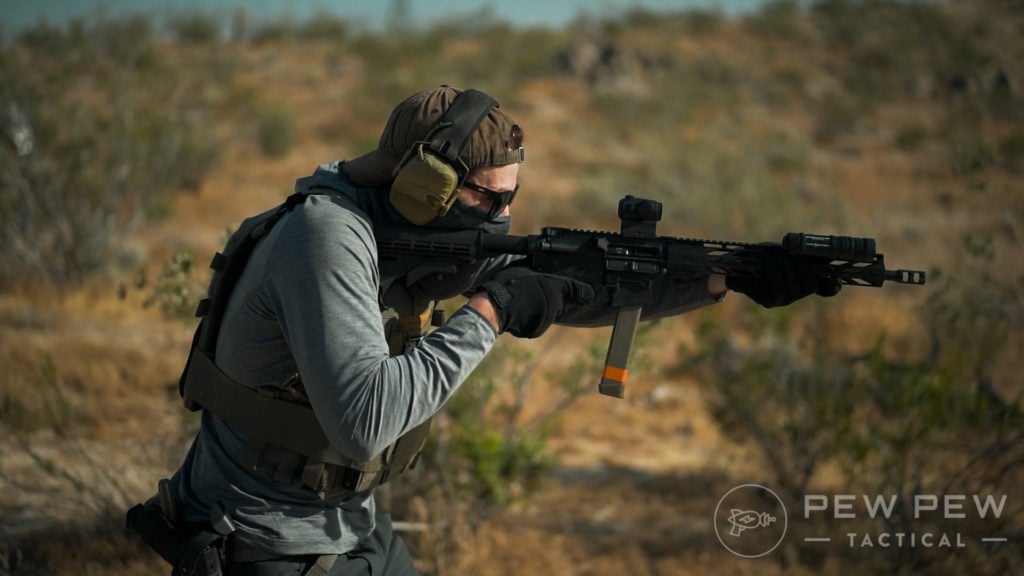
With all this time behind PCCs, I’ve most certainly experimented with optics.
Half of my job is just experimenting with different ideas. Now, what you are likely thinking is that PCCs need a red dot, and that’s it.
If that’s your way of thinking, then I want you to open your mind. In this article, we cover red dots as well as low-powered variable optics and prism optics.
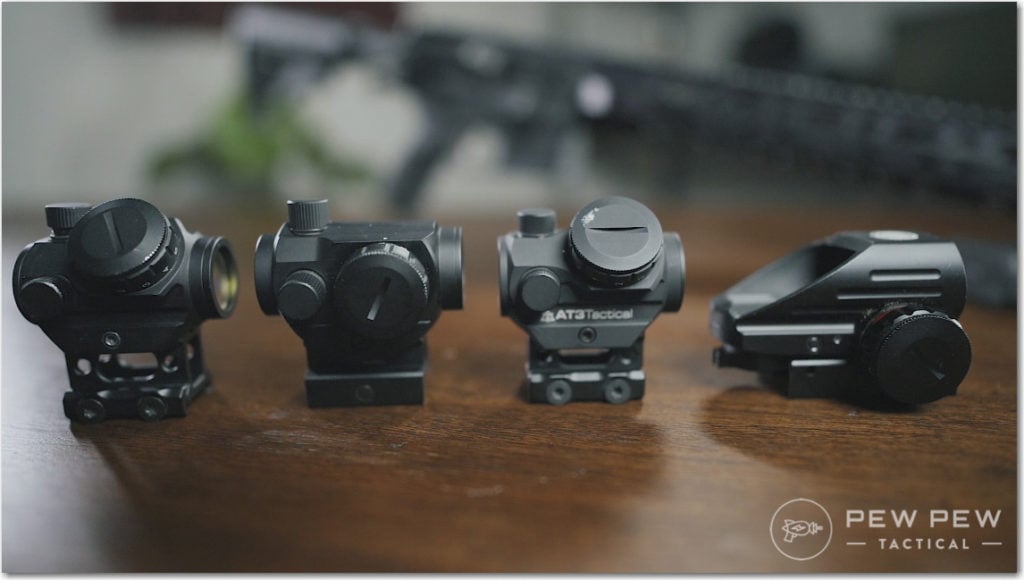
A slight magnification can go a long way, especially if you want to hit targets at 100 yards or to hit smaller targets faster. That’s why we are including LPVOs and low-powered prism optics.
Let’s dive into PCC optics and see why it’s okay to go beyond your average red dot.
THE QUICK LIST
-
Editor’s Pick
-
Best for Astigmatism
-
Best Value
-
Best for Speed
-
Best Enclosed Emitter Micro Dot
-
Best Variable-Power Optic
Table of Contents
Loading…
How We Chose the Best PCC Optics
For this article we focused on PCC optics that balance durability, features, field of view, and value. Travis Pike took the lead in testing and writing for this article — assessing a variety of optics against one another to determine the best options for the PCC platform.
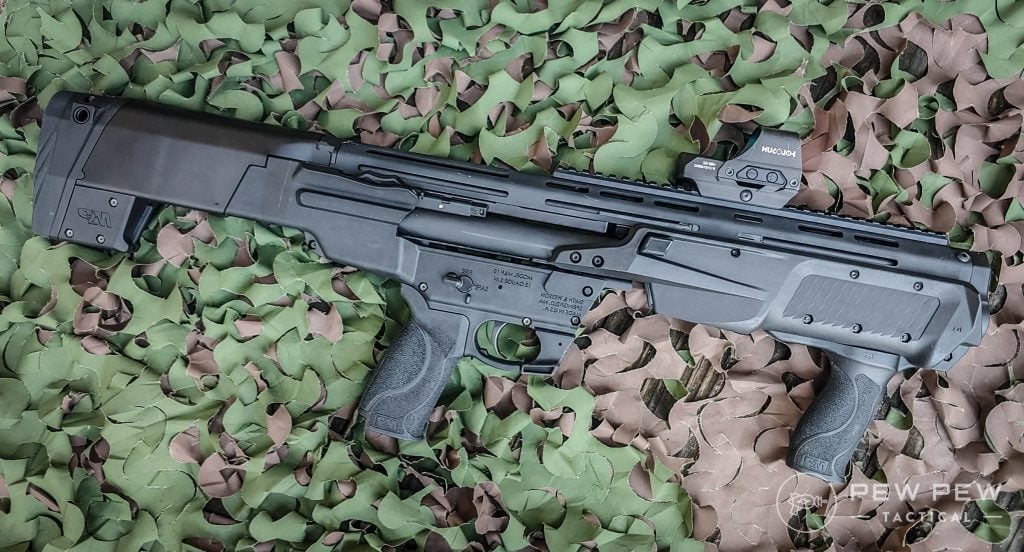
The optics we recommend have spent hands-on time with our reviewers and editors and have been evaluated as models that can hold up to PCC shooting.
Best Non-Magnified PCC Optics
1. Holosun HS510C – Editor’s Pick
Prices accurate at time of writing
Prices accurate at time of writing
-
25% off all OAKLEY products - OAKLEY25
Copied! Visit Merchant
Pros
- Affordable
- Multiple reticle options
- Large viewing window
- Shake-awake
Cons
- Non-enclosed emitter
Specs
- Sight Type: Open reflex sight
- Magnification: 1x
- Weight: 4.94 oz
- Reticle: 65 MOA circle w/ 2 MOA center dot (selectable)
- Battery Life: 50,000 hours
Holosun’s HS510C is a large open-emitter red dot optic that packs a lot of punch for not so much money. Although it is a full-sized reflex sight with a large lens, it remains both light and tough thanks to some clever design.
This includes a titanium hood that protects the critical parts and glass that’s slightly sunk into the frame.
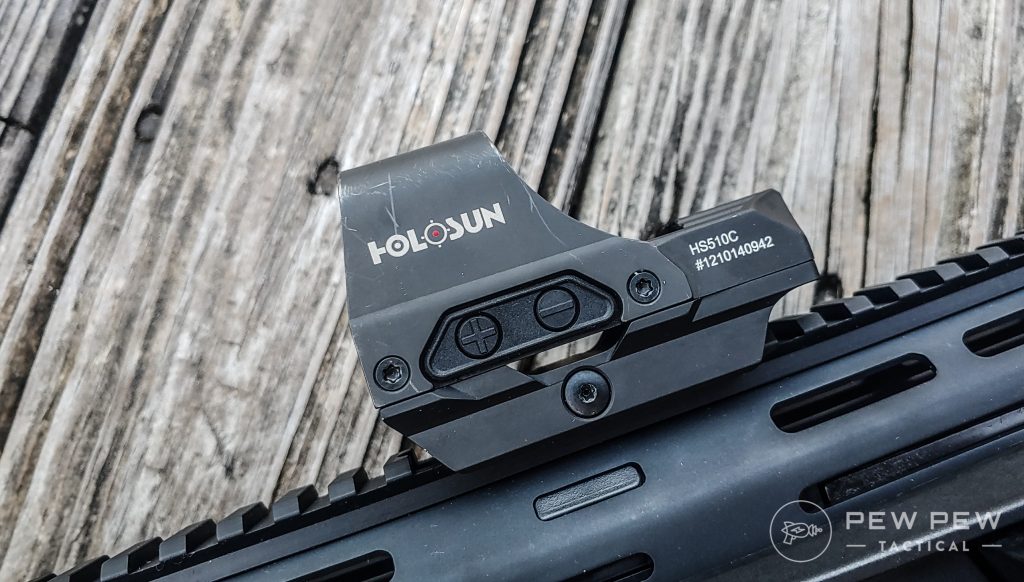
The HS510C has multiple reticle options, including a 2 MOA dot, a 65 MOA circle, and a 65 MOA circle and dot combo.
For PCCs, I like the circle and dot combo. It’s big, easy to see, and can be used to range targets and estimate bullet drop.
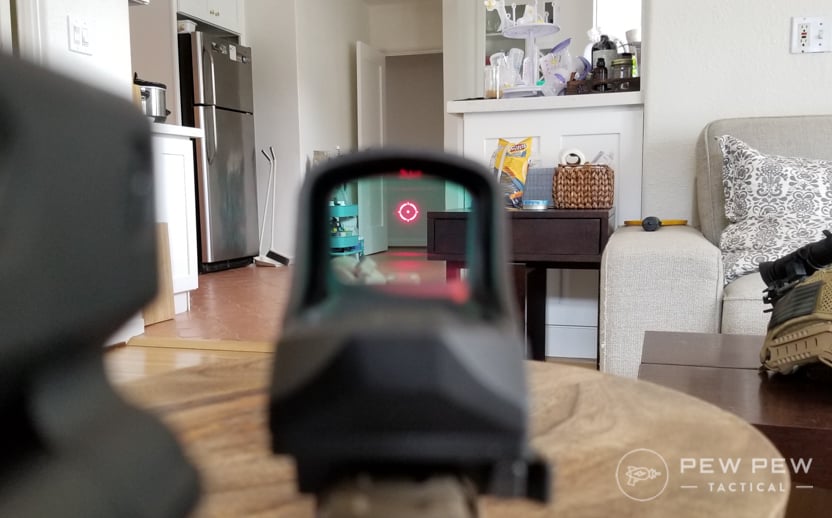
Other features include a solar backup panel, large controls, and a QD mounting option. It’s an excellent option for competitive shooting, home defense, and general-purpose use.
Be sure to check out our full hands-on review of the Holosun HS510C!
2. Swampfox Blade – Best for Astigmatism
Prices accurate at time of writing
Prices accurate at time of writing
-
25% off all OAKLEY products - OAKLEY25
Copied! Visit Merchant
Pros
- Good for astigmatism
- Shake-awake
- Good eye relief and FOV
Cons
- Reticle is designed for 5.56
- Less battery life than some competitors
Specs
- Sight Type: Prism scope
- Magnification: 1x
- Weight: 13.1 oz
- Reticle: CQB Bullet Rise Compensation
- Battery Life: 3,000 hours
Swampfox is somewhat new, but the company brings some awesomely innovative optics to the market, and the Blade is one of their best for PCCs.
This is a 1X prism, and you might ask, why exactly would we need a 1X prism over a red dot?
Well, the Blade offers an etched reticle in case the batteries die, and that reticle is way more helpful than a simple red dot.
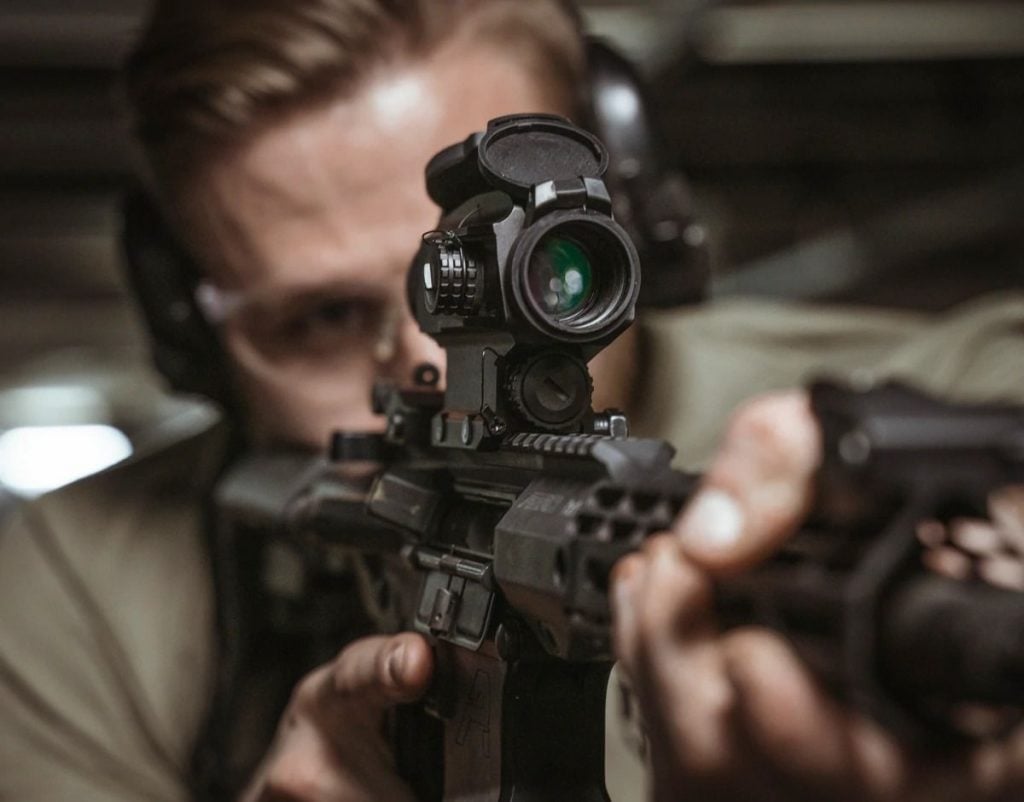
Don’t forget those who suffer from astigmatism can use a prism optic way better than a red dot.
The Blade uses a bullet rise compensating reticle that has three points of aim beneath the central reticle to compensate for the bullet flight path.
Your main aiming point is the tip of the chevron. But beneath the chevron, you have your 15-yard aiming point, then a circle for 10-yards, and finally a small stadia for 7-yard shooting.
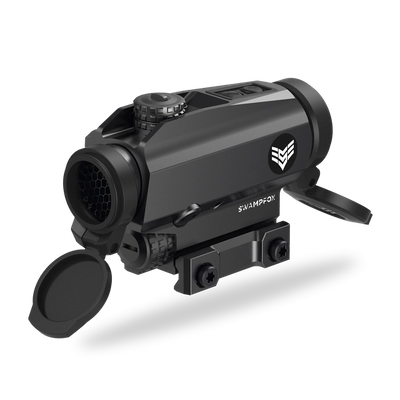
Outside of the reticle, the Blade has a generous 3.8-inch eye relief and a massive field of view. The glass is nice and clear, and with a crisp reticle, it’s become a favorite for PCC users
3. Sig Sauer Romeo5 – Best Value
Prices accurate at time of writing
Prices accurate at time of writing
-
25% off all OAKLEY products - OAKLEY25
Copied! Visit Merchant
Pros
- Shake-awake
- Extremely affordable
- Great battery life
Cons
- Mount could be better
Specs
- Sight Type: Red dot
- Magnification: 1x
- Weight: 5.1 oz
- Reticle: 2 MOA dot
- Battery Life: 40,000 hours
Sig’s Romeo5 has become the de-facto affordable red dot option, and for good reason.
The Romeo5 optic is a simple 2 MOA red dot with a relatively small form factor and comes in at a fairly light 5.1 ounces.
A single CR2032 provides up to 40,000 hours of battery life, and there are eight daytime brightness settings and two night vision settings.
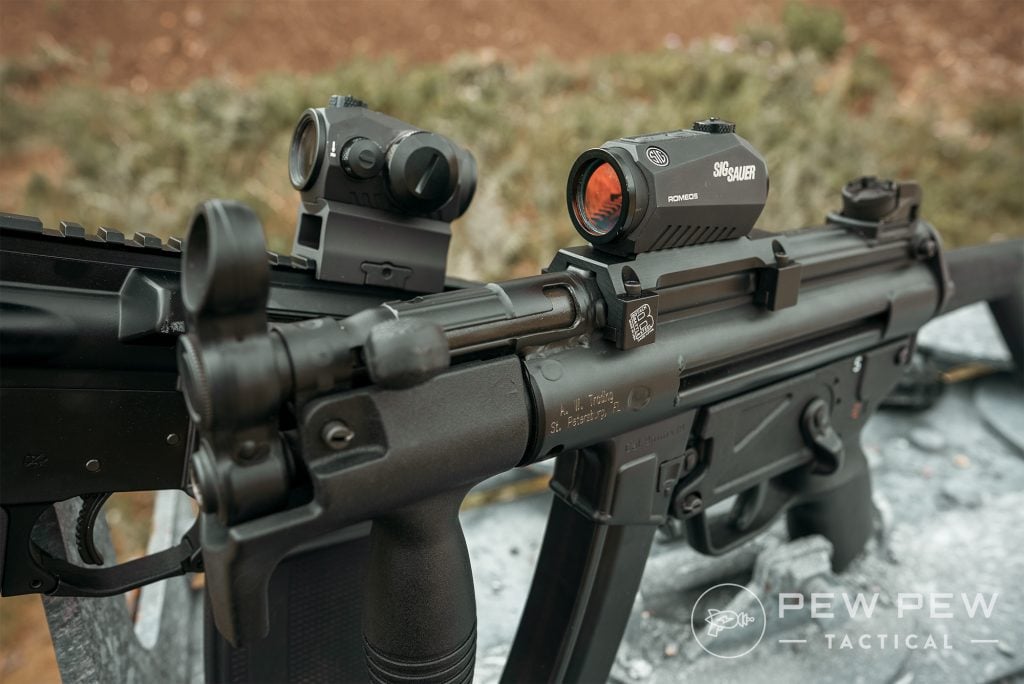
It also features a shake-awake feature that shuts off the dot after two minutes of non-use, and any motion at all will automatically turn the sight back on. No more remembering to turn your dot on and off.
It uses a standard Aimpoint T2 footprint, so mounting options are numerous. But the best part about the Romeo5? It comes in around $100-120 most of the time. This is an absolute steal at this price.
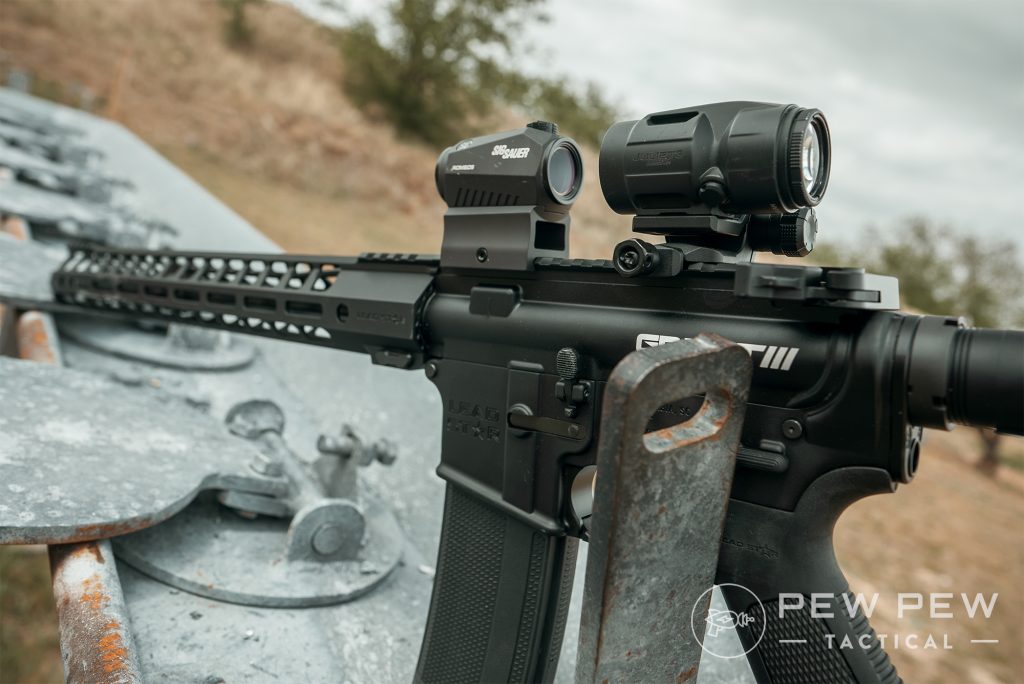
Be sure to check out our full review of the Romeo5!
4. C-More Railway 8 MOA – Best for Speed
Prices accurate at time of writing
Prices accurate at time of writing
-
25% off all OAKLEY products - OAKLEY25
Copied! Visit Merchant
Pros
- Extremely fast sight acquistion
- Swappable diode to switch reticle size
Cons
- Large footprint to viewing window ratio
- Lower battery life
Specs
- Sight Type: Red dot
- Magnification: 1x
- Weight: 5 oz – 6.5 oz
- Reticle: 2, 4, 6, 8, 12, or 14 MOA dot
- Battery Life: 300 – 1500 hours
When I began researching this article, I looked at what USPSA PCC shooters utilize for competition, and one optic that kept coming up was the C-More Railway with an 8 MOA dot.
I know the C-More mostly from movies where it’s an optic small enough to let you see the hero’s face as he aims.
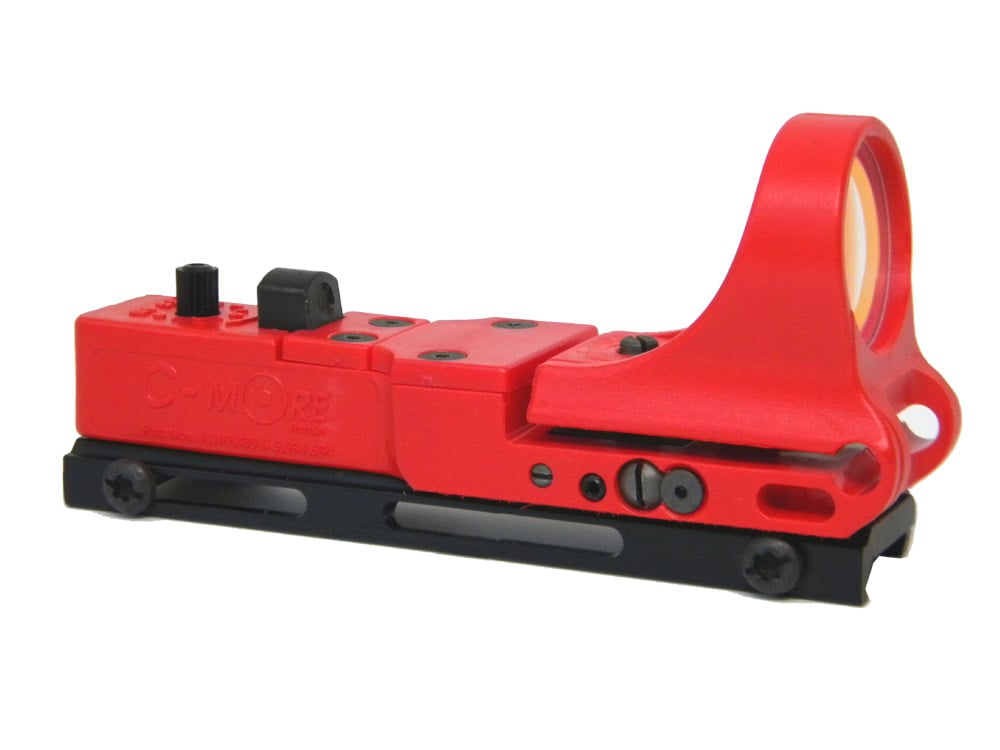
In real life, that ultra-small and thin size is beloved for allowing the maximum amount of peripheral vision an optic can allow.
It becomes a living heads-up display that will enable you to put the dot where you want the dot and make magic. Magic being accurate shots on target.
In rapidly moving USPSA matches, the open design makes it easy to see what’s coming next. You’ll be able to safely navigate the range and engage the wide variety of targets tossed at you.
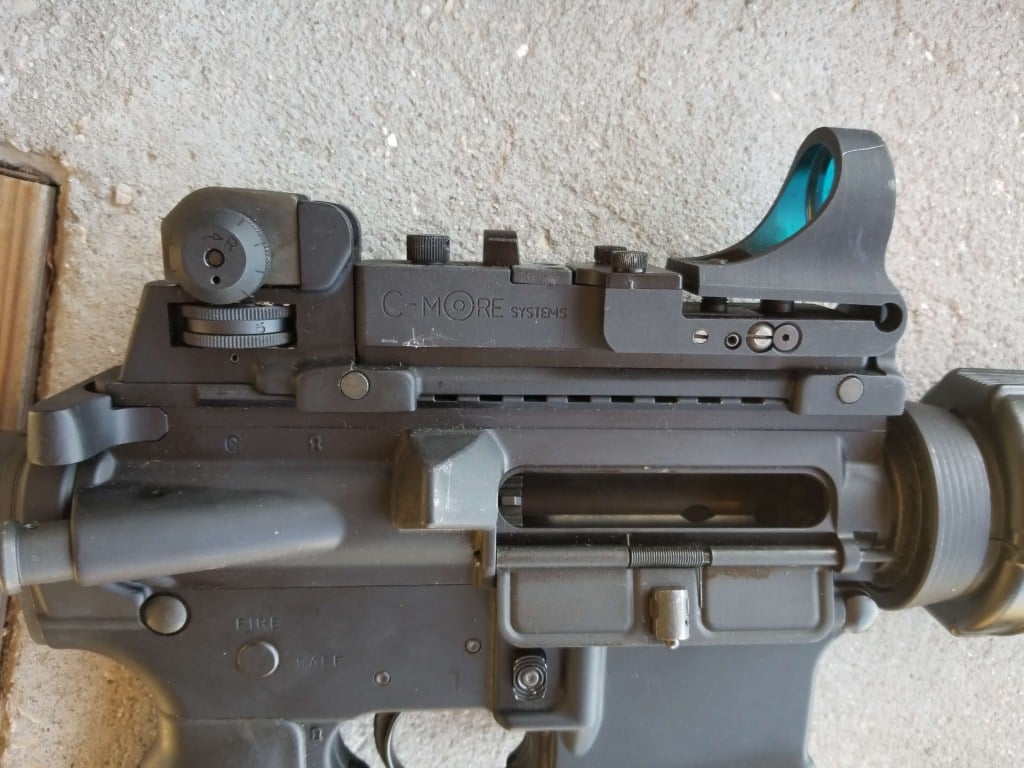
The 8 MOA reticle seems to be the favorite; it’s big, red, ultra-crisp, and easy to see and get on target. 8 MOA is rather large for a red dot, but it seems to make a lot of sense for pistol caliber carbine competition.
The C-More Railway even allows the user to swap diode modules for larger or smaller red dot reticles —from 2 to 16 MOA.
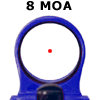
While the optics have a small window, they have a somewhat large underbody. Even with a large body, the weight is 5 ounces, making them nice and light.
The C-More Railway is old-school cool and fits perfectly on a new series of rifles.
5. Holosun HE509T – Best Enclosed Emitter Micro Dot
Prices accurate at time of writing
Prices accurate at time of writing
-
25% off all OAKLEY products - OAKLEY25
Copied! Visit Merchant
Pros
- Lightweight
- Titanium housing
- Multiple reticles
- Shake-awake
- Solar Panel backup
Cons
- No riser included
Specs
- Sight Type: Red dot
- Magnification: 1x
- Weight: 1.72 oz
- Reticle: 32 MOA circle w/2 MOA center dot (selectable)
- Battery Life: 50,000 hours
Pistol-caliber carbines are best when they are small and lightweight. If that’s your vibe, then you likely want a lightweight optic, and the HE509T fits the bill.
This pistol-sized optic comes with a Picatinny mount but will attach to any riser that uses the Trijicon RMR footprint.
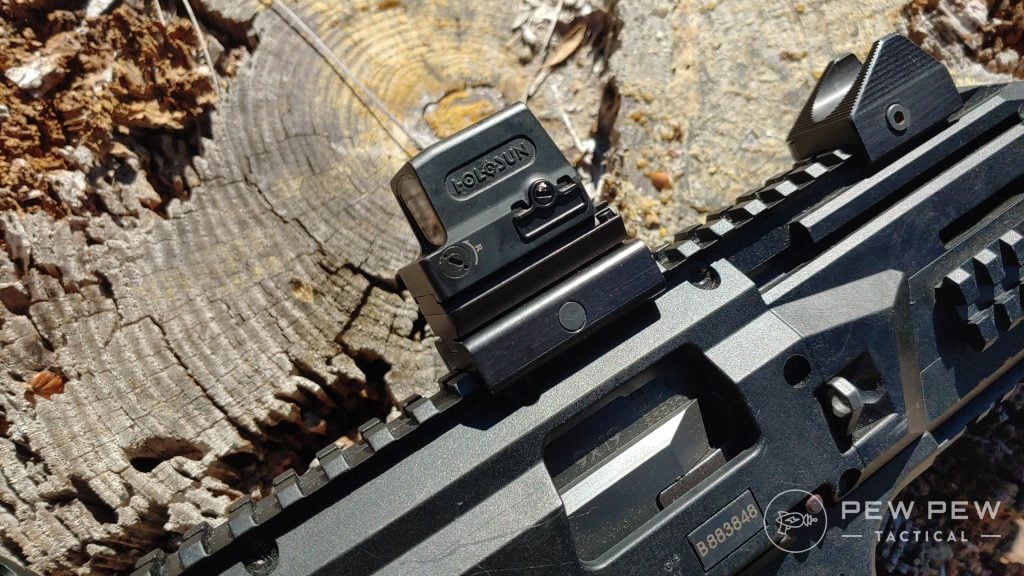
On a non-holster-able firearm, enclosed emitters grant unbeatable resistance to rain, snow, sand, and other debris.
The 509T offers you that enclosed emitter durability on top of having the weight and size of a pistol optic. A titanium housing further improves durability without increasing weight.
Reticle-wise, we get to choose from a 2 MOA circle or a 32 MOA circle with a dot in the middle. The 32 MOA reticle gives you a quasi-effective drop system for both close-range shooting and out 100 yards.
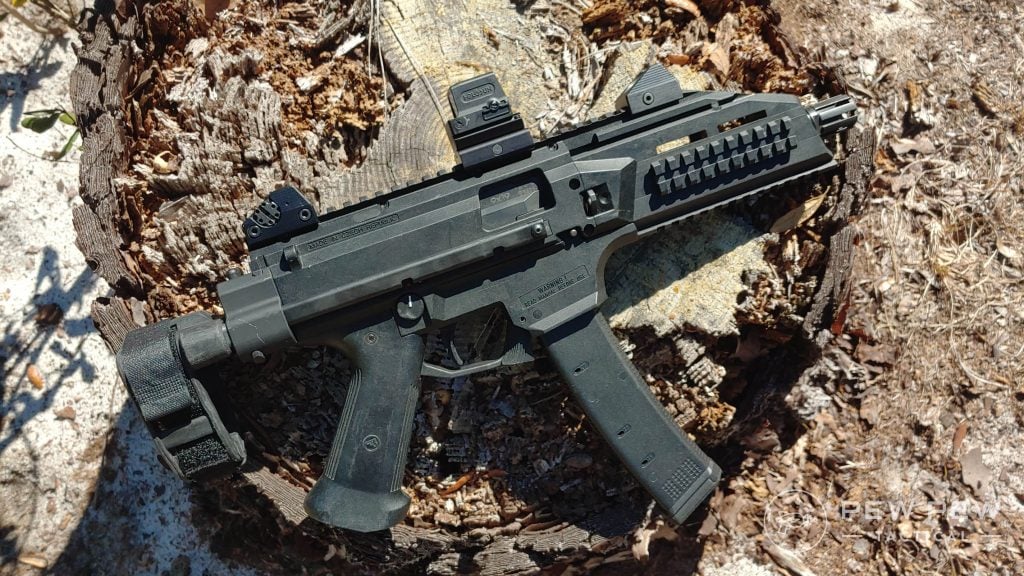
The 509T packs a solar panel for battery backup and utilizes large buttons for easy control, as well as a side-loading battery compartment.
Have you tried the Holosun 509T? Rate it below!
6. Trijicon AccuPoint TR-24 1-4X – Best Variable-Power Optic
Prices accurate at time of writing
Prices accurate at time of writing
-
25% off all OAKLEY products - OAKLEY25
Copied! Visit Merchant
Pros
- Variable power
- Multiple reticles available
- Clear glass
Cons
- Expensive
Specs
- Sight Type: Low power variable optic
- Magnification: 1-4x
- Weight: 14.4 oz
- Reticle: Triangle post
- Power source: Fiber optic and tritium
I know 2X is one thing, but 4X might seem nuts. If you are only thinking about 9mm PCCs, then you might be right.
But when we break out of the 9mm world and into lever action rifles firing calibers like .44 Magnum, then 4X doesn’t seem so crazy. On top of that, we have some not-so-pistol calibers like 4.6 and 5.7 that have become popular.
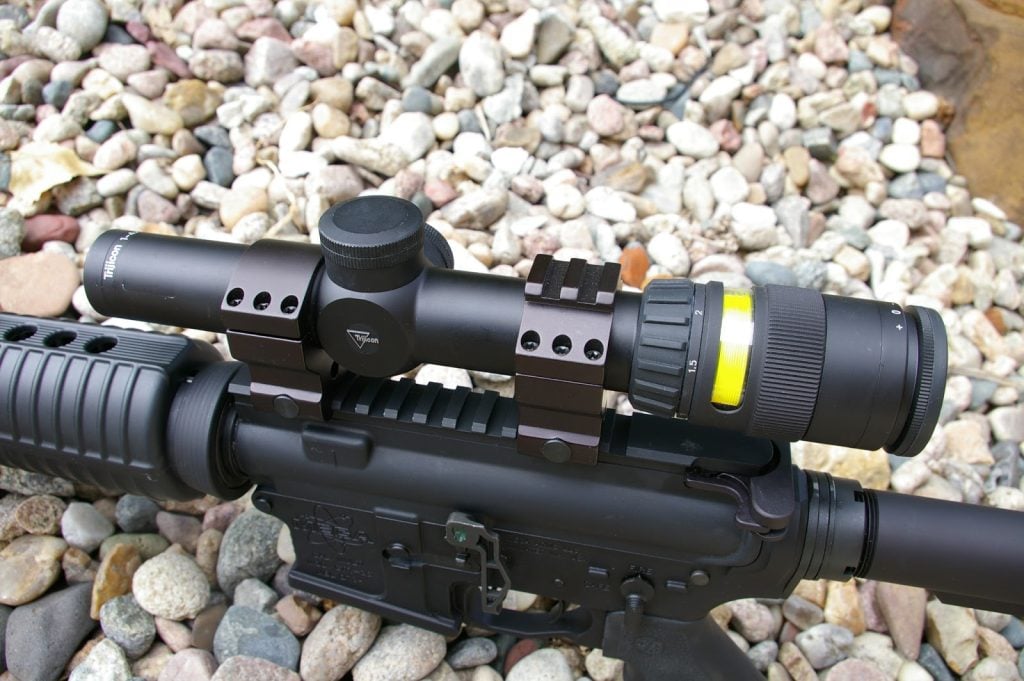
With those more powerful, longer-range cartridges, more magnification makes more sense. A .44 Magnum hunting rifle with a 1-4X Trijicon AccuPoint makes for a quick and decisive hunting tool.
Trijicon offers their AccuPoint with a few reticle options, but I like the Triangle the best. It’s quick and easy to see, fast to get on target and works well at high and low magnification levels.
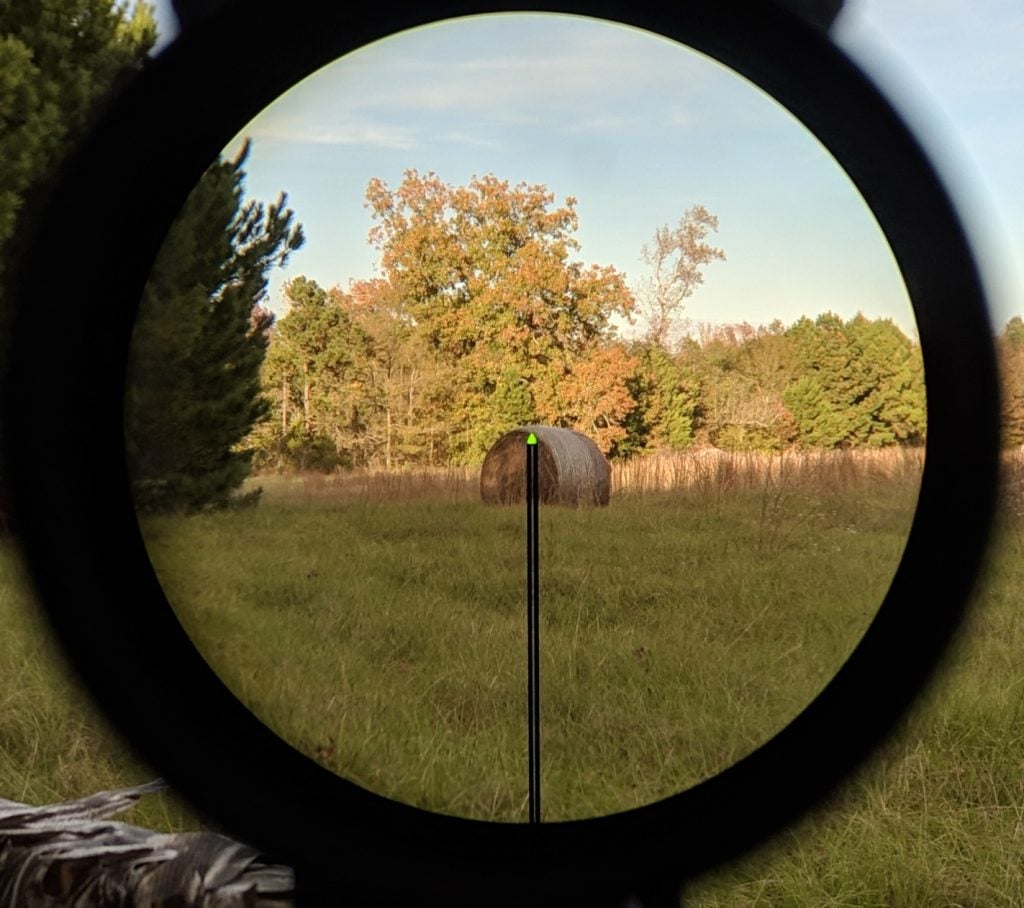
The AccuPoint is perfect for brush hunting and lets you get those quick snapshots in at close range while allowing for further shots through brush without much challenge.
Honorable Mentions
7. Steiner MPS
Prices accurate at time of writing
Prices accurate at time of writing
-
25% off all OAKLEY products - OAKLEY25
Copied! Visit Merchant
Pros
- Clear glass
- Crisp reticle
- Durable
Cons
- Only one reticle option
Specs
- Sight Type: Red dot
- Magnification: 1x
- Weight: 2.05 oz
- Reticle: 3.3 MOA dot
- Battery Life: 13,000 hours
If you are looking for something smaller, the Steiner MPS packs quite a punch.
The MPS is marketed as a handgun sight, but the move from a handgun to a pistol-caliber carbine isn’t too big. In fact, this enclosed emitter micro-optic has become popular enough on long guns to warrant several mounts being made.
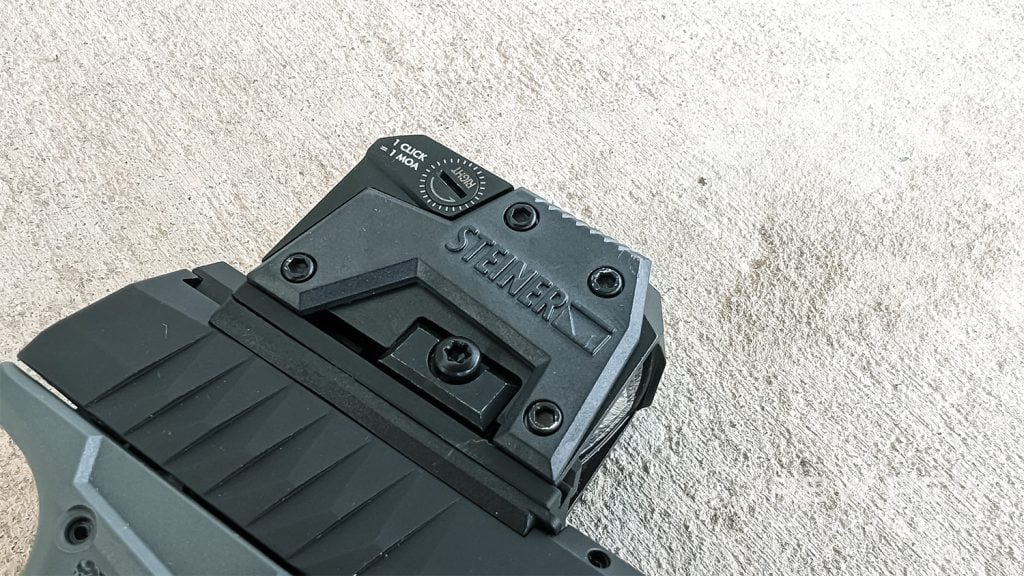
The micro-sized design meshes well with lightweight carbine builds, and most PCCs tend to fit that descriptor quite well.
As with all Steiner products, you get crystal clear glass and one of the crispest red dot reticles out there. The MPS also has giant buttons that make adjustments a breeze, an excellent refresh rate, and a top-loading battery.
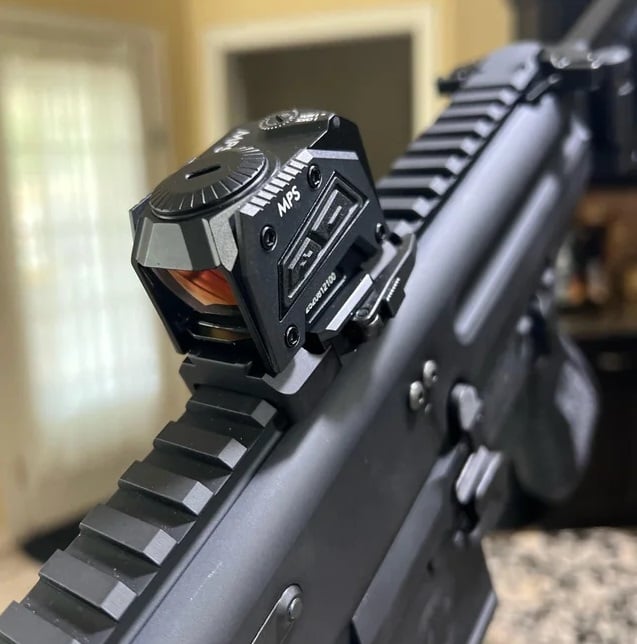
The overall layout of the optic is absolutely fantastic, and I really love its small size for PCCs. It just fades away and gives you that heads-up display dot that makes it fast and easy to get on target.
8. Vortex SPARC Solar
Prices accurate at time of writing
Prices accurate at time of writing
-
25% off all OAKLEY products - OAKLEY25
Copied! Visit Merchant
Pros
- Shake-awake
- Solar panel backup
- Great warranty
Cons
- Very large battery compartment
- Glass is slightly tinted
Specs
- Sight Type: Red dot
- Magnification: 1x
- Weight: 7.5 oz
- Reticle: 2 MOA dot
- Battery Life: 50,000 hours
Vortex’s latest generation of red dots has been right on the money.
The new SPARC series minimizes the sizes but doubles the potential while keeping nearly the same price point. These optics are impressively capable and perfect for a variety of PCCs.
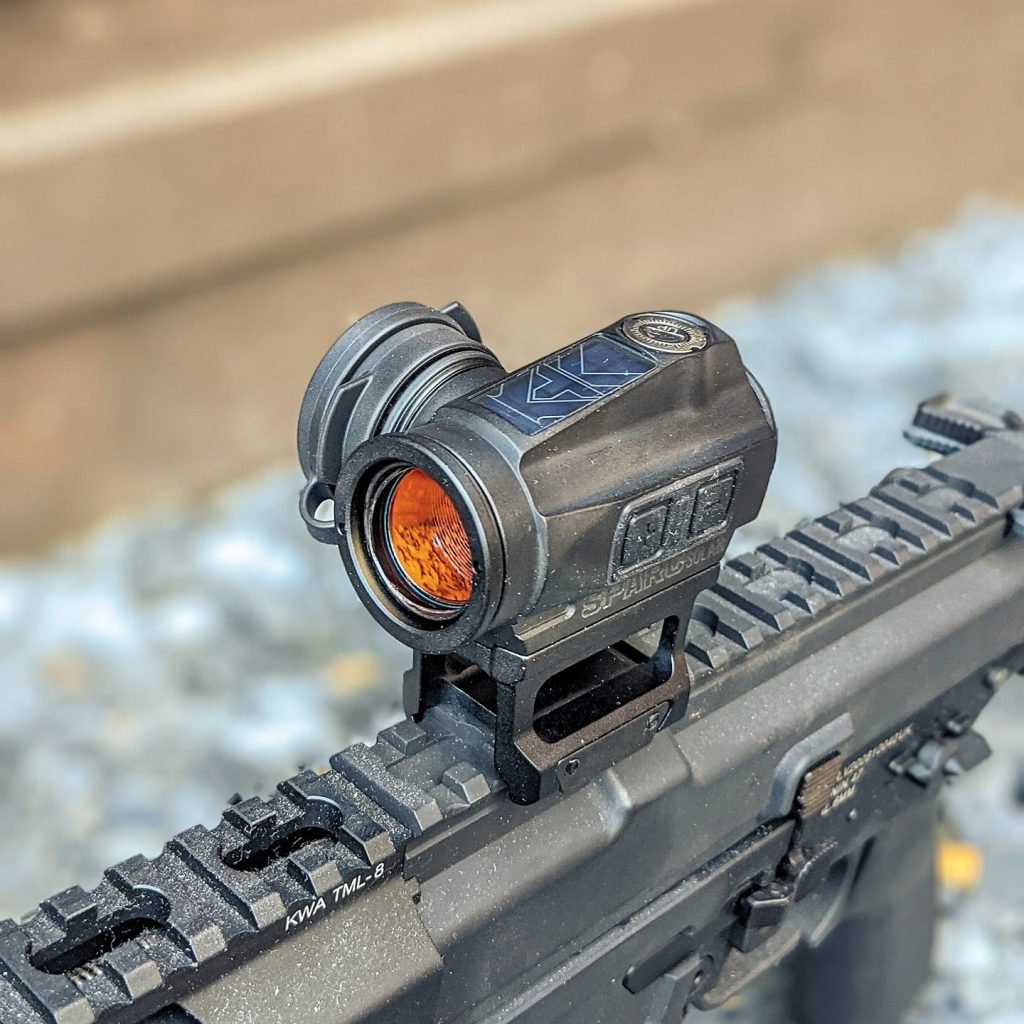
First, they come with both high and low mounts, so they will work well on anything from ARs to Scorpions. The footprint is the traditional Aimpoint Micro, so there are aftermarket options out there as well.
A solar panel makes the optic capable of lasting 150,000 hours on a single battery, and the SPRAC auto detects when light is available and switches between solar and battery when possible.
The SPARC also uses shake-awake tech to extend battery life even more.
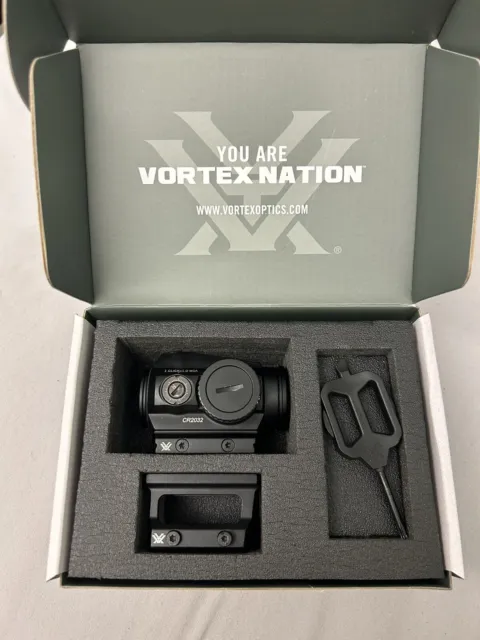
While the SPARC series isn’t revolutionary, it offers a ton of features for a very fair price point.
Why Trust Pew Pew Tactical
At the helm of this article is Pew Pew Tactical author Travis Pike. Travis grew up around firearms and served in the United States Marine Corps, where he spent five years as an infantryman. As an infantryman, he worked with a variety of weaponry.
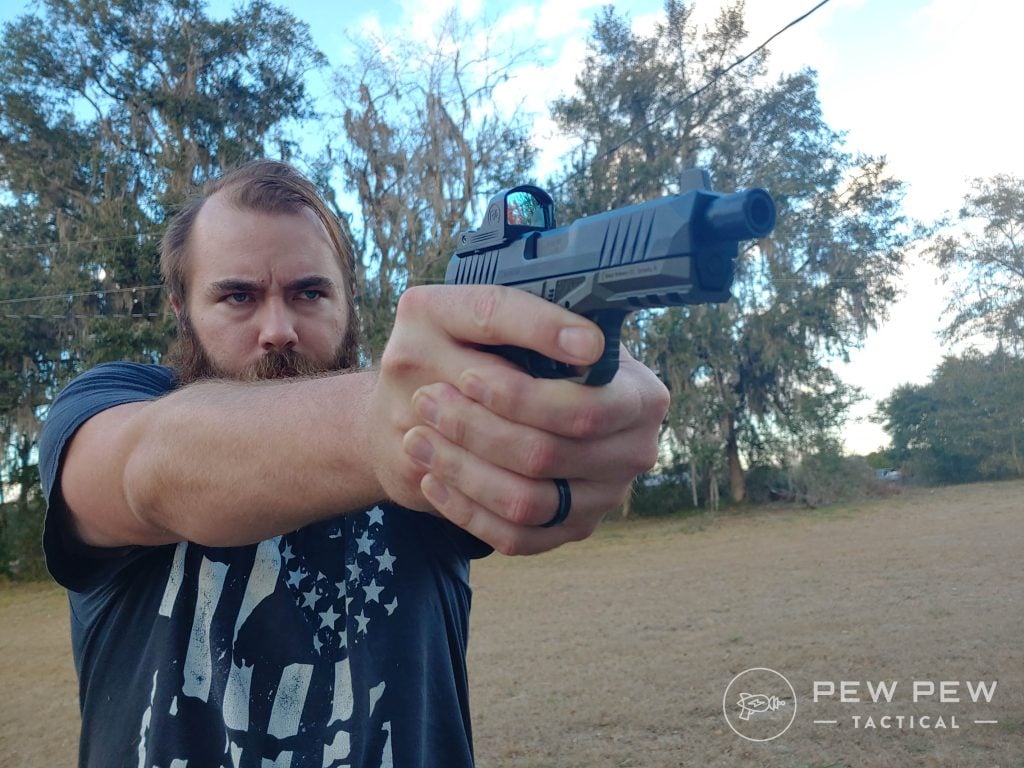
Due to this vast experience, in the middle of his Marine Corps career, he began writing about guns.
Travis loves shooting all types of firearms and has hands-on tested and reviewed numerous guns, optics, and accessories for multiple publications, including Pew Pew Tactical. His extensive experience in both real-world applications as well as his expertise as an NRA-certified instructor and competition shooter allow him to sort through products and determine which optics work best for PCC.
Lead editor for this article is Wyatt Sloan, Jr. Editor. Wyatt is an NRA-certified instructor with previous experience as a USPSA competitor. Wyatt personally owns over 200 firearms and has 10 years of home-based FFL firearm sales. He has used his extensive experience with PCCs and firearms at large to fact-check this article and remove products that are discontinued.
Our experienced team of gun reviewers is run by Editor-in-Chief Jacki Billings, a member of the Society of Professional Journalists, ACES: Society for Editing, and the Professional Outdoor Media Association. Jacki has her bachelor’s degree in Journalism and has worked as a media professional for close to 20 years, specializing in gun media for almost 10 years. She uses her extensive professional journalism and editing experience to set testing protocols and editorial standards.
Pew Pew Tactical Founder and CEO Eric Hung also contributed to this article.
Final Thoughts
PCCs are not just a growing trend in the general firearms world, but they are also a favorite of the competition world.
As USPSA PCC competitions continue catching the eyes of gun owners, I think we’ll see the world of PCCs expand quite a bit in the coming years. And with that, a need for PCC optics.
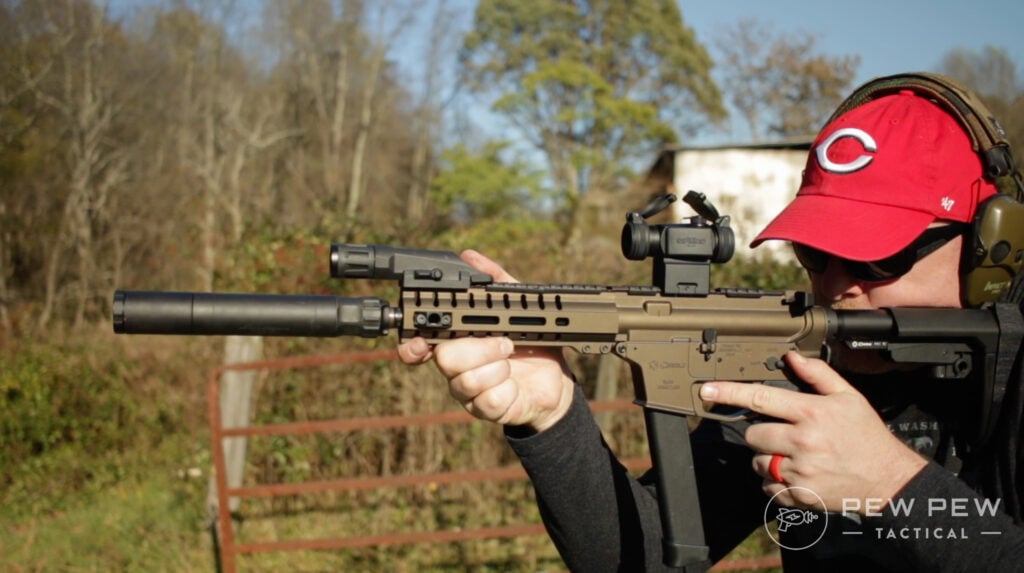
While red dots and PCCs are like peanut butter and jelly, I think having an open mind when it comes to optic selection is important so that you can truly tailor your PCC for a specific purpose and excel at that purpose.
What optics do your PCCs wear and why? Let us know in the comments below. Need a PCC to go with that optic? Check out our list of the Best Pistol Caliber Carbines for Competition.
Latest Updates
Updated August 2024: Removed Swampfox Tomahawk Guerilla BDC (discontinued) & Aimpoint ACO (discontinued).
Updated December 2023: Added Trijicon AccuPoint TR-24, Steiner MPS, Aimpoint ACO, Holosun HS510C, Vortex SPARC Solar. Removed Lucid HDx, Primary Arms SLx 2.5X Prism.

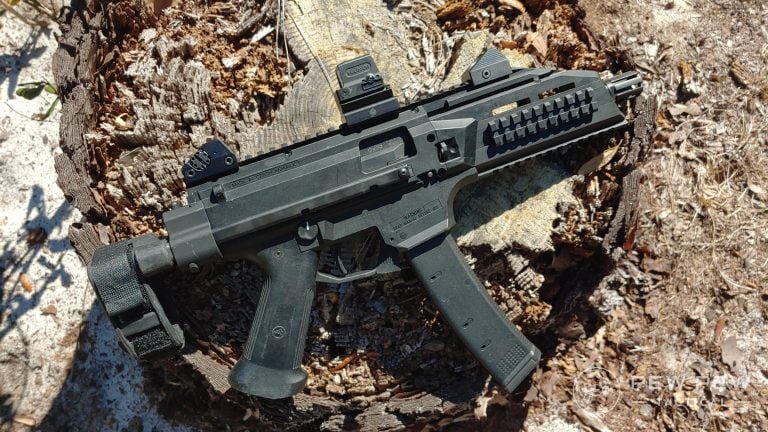


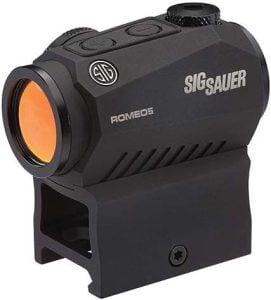
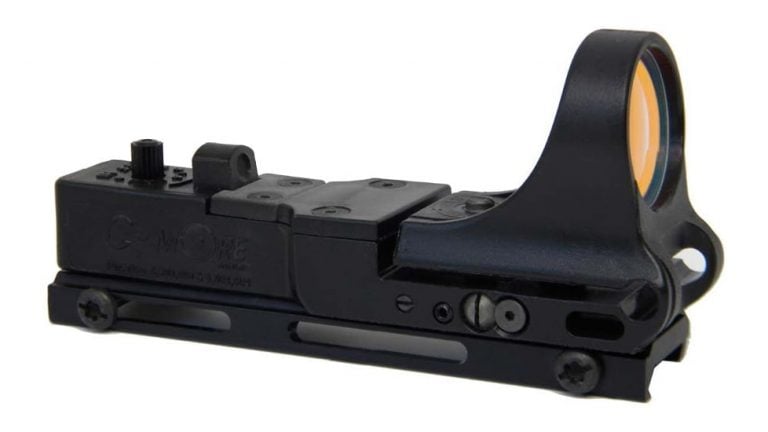


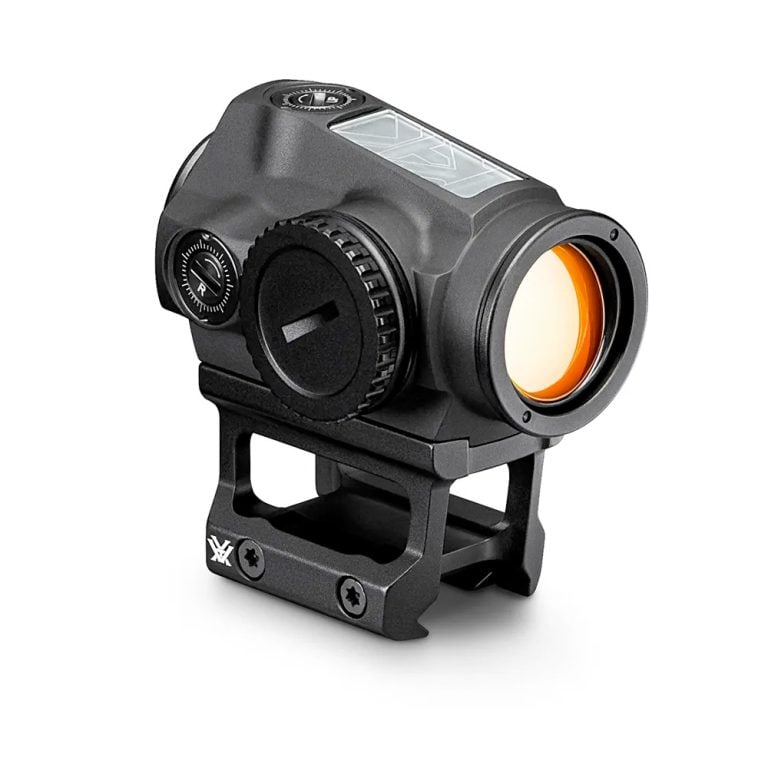



6 Leave a Reply
Can we get an in depth review of the TR24 compared to modern optics? Is she old and wrinkly or like fine aged Parmesan cheese.
You forgot to mention in the "Cons" section, made in China
I have the Romeo 5 on my sub2000. It’s garbage. It will not hold zero. This is the second and last Sig optic I’ll purchase. The first was the SigTac light/laser. 9mm recoil turned the light on and off. Junk.
Well, when you shoot at ranges from 15-yards and inward, the bullet will appear to hit high. This is due to the mechanical offset of the optic. Shouldn't be appear to hit LOW?
You are correct.
"mechanical offset" is an incomplete statement. What actually takes place on almost all rifles, is the receiver is set at a 7 degree down angle relative to the barrel. This is how you can have a 25/100 or 50/200 sight in. IE if you could see the bullet in those ranges it would appear to climb through the view of the optic.
When combined with height overbore the bullet will indeed appear to hit low, at sub-25-yard ranges. It will appear to hit high, between 25 and 100 yards. (or 50-200)
The author has failed to include the 7 degrees of offset in his calculation.
Are you sure about that 7 degrees?